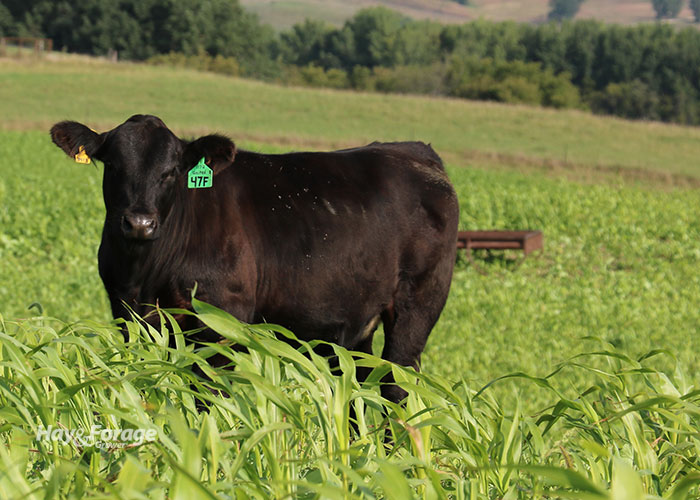
Using so-called cover crops as a forage resource is an ongoing trend in many U.S. regions, but there are some risks to consider when grazing those crops.
University of Nebraska-Lincoln (UNL) Beef Systems Specialist Mary Drewnoski states that the specific level of nitrates in grazed forage that make cattle sick is unknown, but many forage species have the potential to accumulate high concentrations of nitrate.
“With careful grazing, haying, and livestock management, the potential for livestock losses can be reduced,” Drewnoski writes in a recent UNL Cropwatch newsletter.
All annual grasses and brassicas accumulate nitrate. Brassicas contain a higher concentration of nitrates, but they also have more available energy, which may help offset the nitrate toxicity.
Less risk for grazing
Drewnoski explains that the potential for nitrate toxicity is lower in grazed forages than in dry hay with the same level of nitrate due to the following factors:
1. Grazing animals eat more slowly than those receiving hay.
2. When cattle are grazing, they tend to be selective and do not graze the entire field close to the ground (where nitrate levels are highest). This means that if allowed access to the field (not strip grazed), they will likely consume the plant parts with lower nitrate concentration first. This will reduce the amount of nitrates consumed during the grazing period.
3. Fresh, high-moisture forages release nitrates into the rumen at a slower rate than dry forages such as hay.
4. Cattle consuming high-energy diets can handle more nitrates than those on low-energy diets. Many of the cover crops grazed are very high in energy, including the brassicas and immature grasses.
The specialist notes that allowing a warm-season summer annual to reach maturity and stockpiling it for winter grazing will reduce nitrate toxicity susceptibility.
Drewnoski cites several grazing research trials she has been involved with where measured nitrate levels would normally have been considered very high risk. However, in all cases, there were no signs of cattle toxicity. She notes that the animals were allowed to be selective and the forage quality was very high (above 65% total digestible nutrients).
Here are five strategies to reduce the risk for nitrate toxicity when grazing annual forages:
1. Make sure cattle have full stomachs before putting them on pasture. It’s always a good idea to feed them some dry hay before turning them into a pasture.
2. Use lower risk cattle, if possible. Pregnant cattle are at the highest risk and open cows are the lowest.
3. Gradually adapt cattle by grazing the lowest nitrate fields first, then work up to the highest.
4. Graze higher nitrate fields lightly to allow cattle to be selective.
5. Consider grain supplementation while adapting cattle. This will supply energy for rumen microbes to convert nitrate into bacterial protein and minimizes the intermediate nitrite production.
Nitrate toxicity will always be a concern when planting cover crops for forage in hail-damaged crop fields, but with careful management, farmers can avoid nitrate toxicity and prevent sickness and death in livestock.

C.J. Weddle is serving as the 2020 Hay & Forage Grower editorial intern. She currently attends Mississippi State University, majoring in agricultural education, leadership, and communications. She grew up on a farm in Vardaman, Miss., where her family raises sweet potatoes and soybeans.

